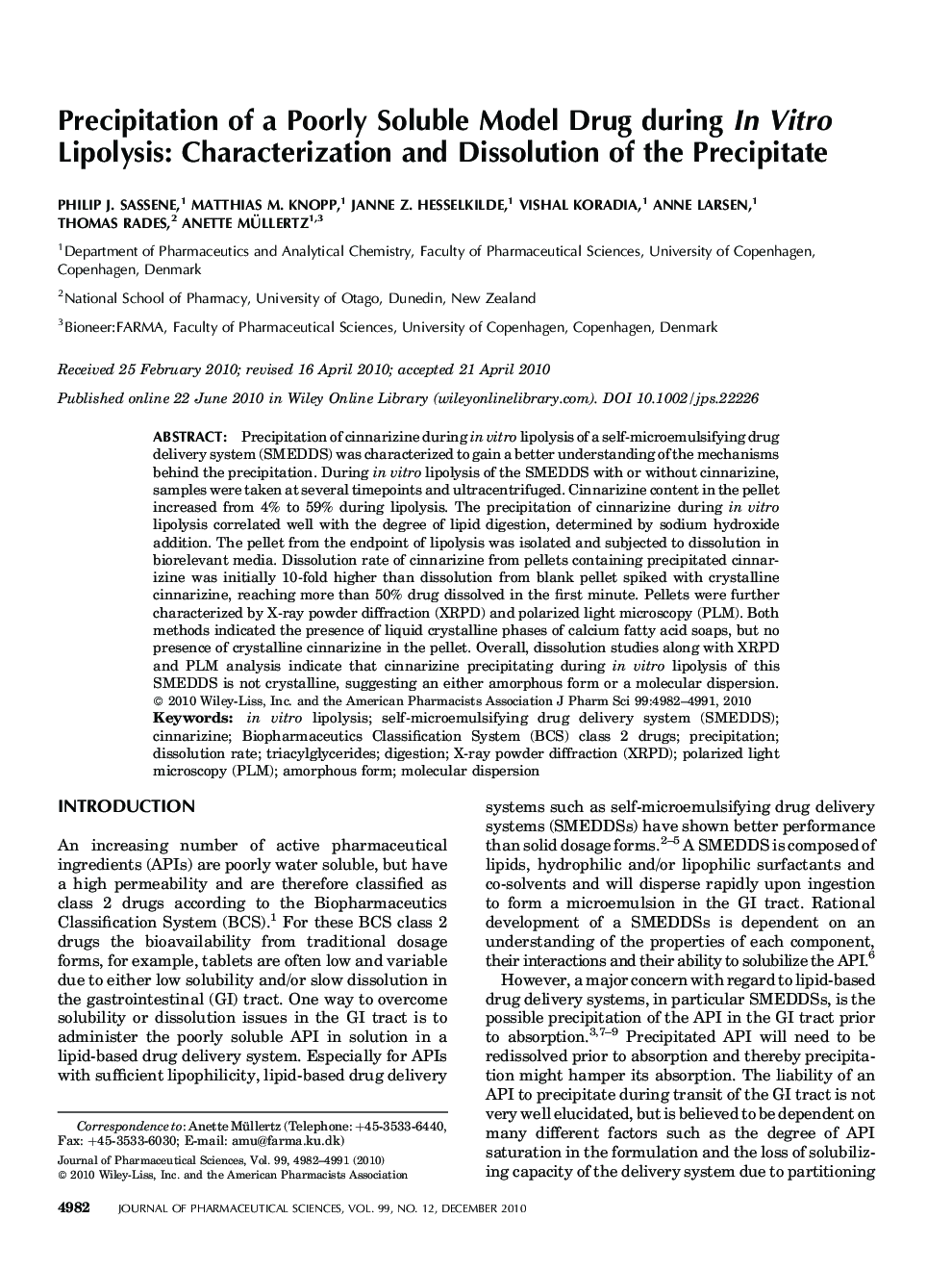| Article ID | Journal | Published Year | Pages | File Type |
|---|---|---|---|---|
| 2484929 | Journal of Pharmaceutical Sciences | 2010 | 10 Pages |
Abstract
Precipitation of cinnarizine during in vitro lipolysis of a self-microemulsifying drug delivery system (SMEDDS) was characterized to gain a better understanding of the mechanisms behind the precipitation. During in vitro lipolysis of the SMEDDS with or without cinnarizine, samples were taken at several timepoints and ultracentrifuged. Cinnarizine content in the pellet increased from 4% to 59% during lipolysis. The precipitation of cinnarizine during in vitro lipolysis correlated well with the degree of lipid digestion, determined by sodium hydroxide addition. The pellet from the endpoint of lipolysis was isolated and subjected to dissolution in biorelevant media. Dissolution rate of cinnarizine from pellets containing precipitated cinnarizine was initially 10-fold higher than dissolution from blank pellet spiked with crystalline cinnarizine, reaching more than 50% drug dissolved in the first minute. Pellets were further characterized by X-ray powder diffraction (XRPD) and polarized light microscopy (PLM). Both methods indicated the presence of liquid crystalline phases of calcium fatty acid soaps, but no presence of crystalline cinnarizine in the pellet. Overall, dissolution studies along with XRPD and PLM analysis indicate that cinnarizine precipitating during in vitro lipolysis of this SMEDDS is not crystalline, suggesting an either amorphous form or a molecular dispersion.
Keywords
Related Topics
Health Sciences
Pharmacology, Toxicology and Pharmaceutical Science
Drug Discovery
Authors
Philip J. Sassene, Matthias M. Knopp, Janne Z. Hesselkilde, Vishal Koradia, Anne Larsen, Thomas Rades, Anette Müllertz,
